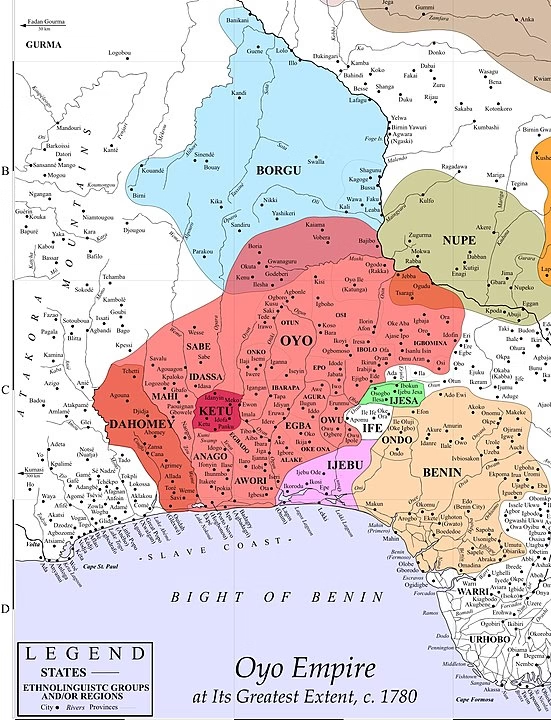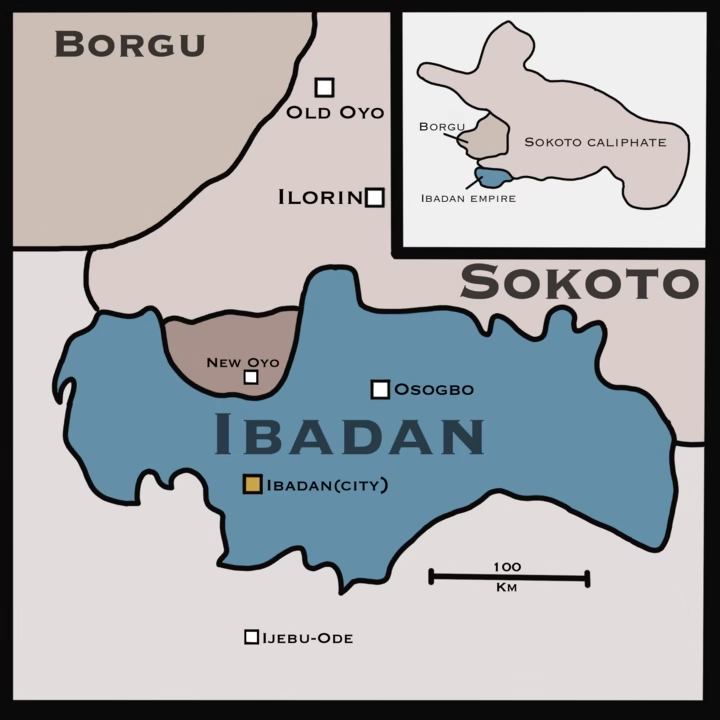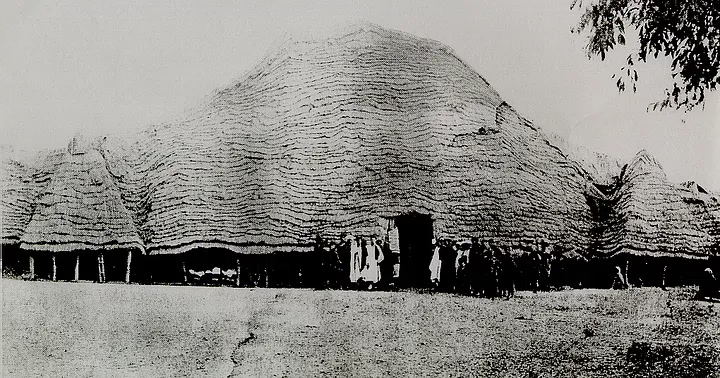The Alaafin of Oyo (correctly spelt Aláàfin) was the monarch of the Oyo Empire, a dominant force in pre-colonial West Africa renowned for its political, cultural, and military influence.
This article explores the pivotal roles played by the Aláàfin in shaping the early development of modern Ibadan. It highlights the intricate relationship between Oyo’s leadership and the rise of this historic city.
The Aláàfin of Oyo
The Alaafin of Oyo is the traditional ruler of the Oyo Empire, which was once one of the most powerful states in West Africa. The title “Aláàfin” means “owner of the palace,” symbolising the monarch’s authority as a custodian of governance, culture, and military power. Despite wielding immense power, the Aláàfin governed alongside a council of chiefs known as the Ọyọ Mèsì, ensuring checks and balances in the empire’s administration.
At its peak between the 17th and 18th centuries, the Oyo Empire extended its influence across much of Yorubaland and neighbouring countries. However, the late 18th century brought significant challenges to the Oyo Empire. Internal conflicts, growing resistance from vassal states, and external pressures, particularly from the Sokoto Caliphate, weakened the empire.

The collapse of Oyo’s central authority in the early 19th century set the stage for the emergence of new power centres, including the city of Ibadan.
Alaafin of Oyo and the founding of present day Ibadan
After the demise of Alaafin Oluewu and destruction of Oyo Ilé in 1835, Atiba Atobatele was chosen as the new Alaafin.
As part of his efforts to rebuild and protect Oyo, Atiba moved the imperial capital to Ago Ọja, which became known as Oyo Ago or Oyo Atiba.
Around this time, the present Ibadan became a safe haven and war camp for warriors from different Yoruba factions, including the Ifẹ́, Ẹ̀gbá, and Ọyọ. Located in the savannah region, the site was chosen for its natural defensive advantage and fertile lands. Over time, Ibadan transitioned from a war camp into a permanent settlement, attracting traders, farmers, and artisans.

Ibadan as a Military Power
In order to protect the new capital, Atiba conferred the Bashorun title on Oluyole, the military leader of Ibadan and a nephew of Alaafin. Unlike other Yoruba cities that were ruled by kings or chiefs, Ibadan had adopted a unique military-based governance system.
Under this power arrangement with Aláàfin Atiba, Ibadan was given the mandate to protect and administer towns in the north, north-east of Ijesas, Ekitis, and eastern regions.
Ibadan thus became highly successful and a formidable power, defeating major rivals like the Ijaiye, Ilorin and Dahomey in key battles.
The Complex Relationship between the Aláàfin of Oyo and Ibadan
The rise of Ibadan created a complex relationship with the Aláàfin of Oyo. By the mid-19th century, Ibadan controlled much of southern Yorubaland and had positioned itself as a successor to the Oyo Empire. While Ibadan respected the cultural and spiritual authority of the Aláàfin, it operated independently as a military powerhouse.
This delicate balance of power was tested during the Kiriji War (1877–1893), a prolonged conflict involving multiple Yoruba states. Aláàfin Adéyemí I was the ruler of Oyo during this period.
While he did not openly side with Ibadan’s enemies, his actions and subtle signals suggested a lack of full support for an outright Ibadan victory, which is quite understandable. Ibadan had overturned the existing power dynamics, emerging as the new regional superpower and a dominant force in Yorubaland.
Ibadan and the Aláàfin: The Legacy
Today, both the Aláàfin of Oyo and the city of Ibadan remain central to Yoruba identity. The Aláàfin continues to be revered as a custodian of Yoruba tradition, even as Nigeria’s political landscape has shifted.
Ibadan has evolved from a military outpost loyal to the Aláàfin into the regional capital of Western Nigeria, later becoming the capital of Oyo State. Today, it stands as one of Nigeria’s most prominent cities and the largest urban centre in Black Africa by landmass.



Leave a Reply